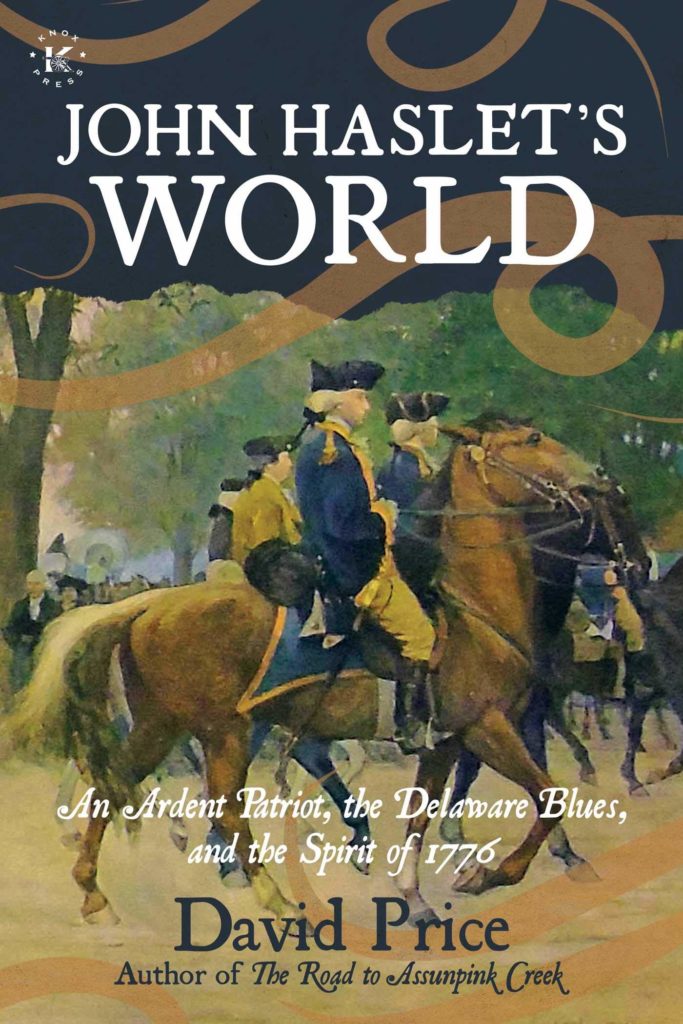 John Haslet’s World: An Ardent Patriot, the Delaware Blues, and the Spirit of 1776, will be released November 3, 2020. You can pre-order the book now on Amazon. The book can also be ordered directly from its publisher, Knox Press.
John Haslet’s World: An Ardent Patriot, the Delaware Blues, and the Spirit of 1776, will be released November 3, 2020. You can pre-order the book now on Amazon. The book can also be ordered directly from its publisher, Knox Press.
Colonel John Haslet and his Delaware Continental Regiment, known as the Delaware Blues, played a pivotal role in George Washington’s 1776 campaign that culminated in the Ten Crucial Days.
“Haslet was someone who kept popping up in David Hackett Fischer’s book, Washington’s Crossing,” says David Price, a historical interpreter at Washington Crossing Historic Park. “When I was planning my first book, which detailed several unsung heroes from the revolution, it was clear to me that he needed to be a part of it.”
Price felt Haslet deserved even further exploration because so little was known about his life prior to his involvement in the Revolutionary War, during which Washington considered him to be one of his most able officers. What Price uncovered was an exceptionally educated and articulate man who achieved the American dream after emigrating from Northern Ireland.
Haslet’s story is detailed in the third book Price’s Ten Crucial Days trilogy: John Haslet’s World: An Ardent Patriot, the Delaware Blues, and the Spirit of 1776.
Haslet was a preacher, a physician, and a plantation owner. As his stature rose, he also became a politician. “I’m convinced he would have been promoted to general and been elected governor of Delaware after the war,” Price says.
Haslet was appointed commander of what would become one of the most elite units in the Continental Army. “It was a true professional fighting force in every sense,” Price says. But by the first Battle of Trenton, its ranks had been reduced from 800 strong several months earlier to a mere 100. And following the victory, only six remained, including Haslet himself.
“The regiment’s soldiers assumed it was the last battle of the year, and they believed their enlistments were set to expire on December 31, so most left,” Price says.
Disappointed, Washington ordered Haslet to return to Delaware to recruit a new regiment, but Haslet ignored it, recognizing that the Continental Army was in the midst of a turning point in their fight for independence. With swollen legs from falling into the Delaware River during the return crossing on December 26, Haslet marched some 12 miles to Princeton in sub-freezing temperatures as part of General Hugh Mercer’s brigade on the night of January 2, 1777.
He was killed the next day during the Battle of Princeton, from a musket ball to the head, while attempting to rally his fellow soldiers against a British bayonet charge.
Near the 50-foot-tall Princeton Battle Monument featuring Washington are four smaller markers. One is dedicated to Haslet.
“The close proximity is appropriate for a few reasons, most significant of which is that Washington was so reliant on Haslet and his regiment during the dark days that preceded the Ten Crucial Days,” Price says. “Washington clearly recognized Haslet’s death as a considerable loss for the patriot cause.”

